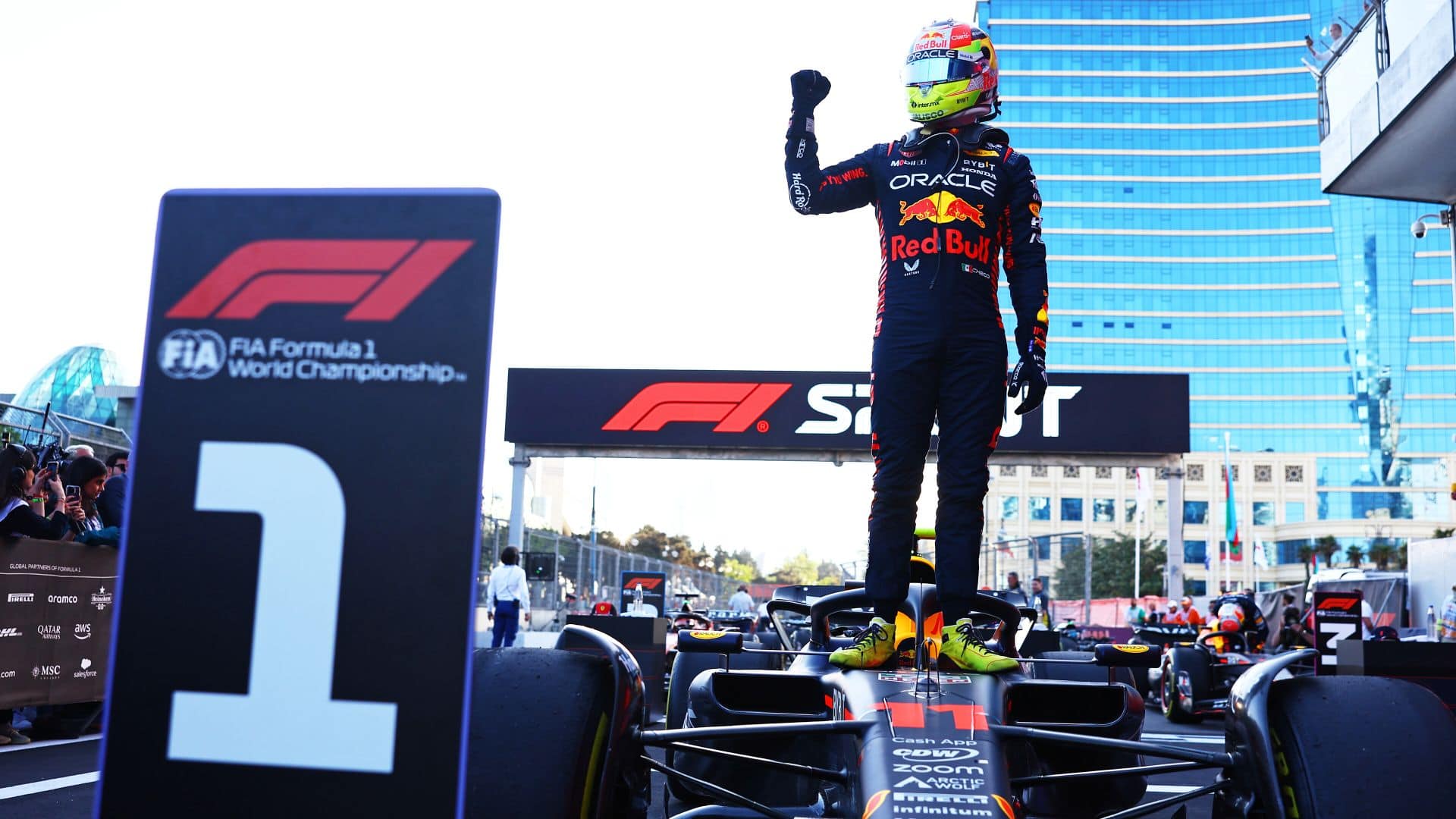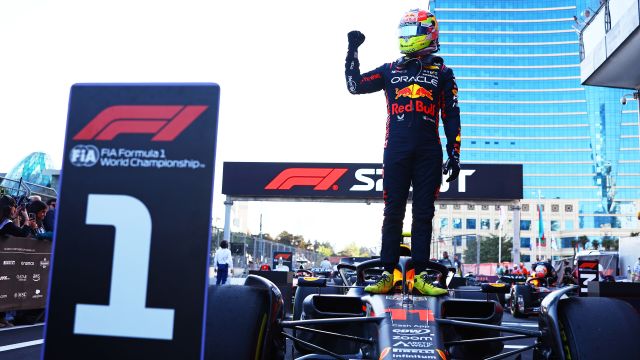How Many Sprint Races In F1 2024?


The inclusion of sprint races from 2021 has added a new dimension to race weekends, and for the 2024 season, the F1 calendar will include six sprint races. These short-format races serve not only to provide additional excitement for fans but also to supplement the traditional qualifying sessions, playing a pivotal role in fan engagement both at the track and on TV.
As the sport continues to evolve, the F1 management and the FIA are particularly focused on enhancing the fan experience and expanding the sport’s global reach. In 2024, organisers embraced this direction by including venues such as China and Miami for the first time, alongside returning locations in Brazil, Austria, Austin, and Qatar.
Key Takeaways
- Formula 1 has scheduled six sprint races in the 2024 season.
- New additions in China and Miami complement the sprint race calendar.
- Sprint races augment standard qualifying and provide an alternative racing format.
2024 F1 Sprint Races Overview
The 2024 season of the FIA Formula One World Championship introduces six sprint races, complementing the full 24-race schedule, with China and Miami joining the sprint format for the first time.
Importance and Evolution of Sprint Races
Introduced in 2021, sprint races have become a regular feature in Formula 1, designed to increase on-track action and provide a dynamic approach to racing weekends. They are shorter events, typically 100km, and there is no requirement for a compulsory pit stop. Their inclusion has been significant in maintaining fan engagement throughout race weekends, providing fans with additional sports betting opportunities, more wheel-to-wheel action for fans at the track, and increased value for money for those who watch F1 via subscription services.
Confirmed Sprint Races Schedule
Here’s the confirmed schedule for 2024’s F1 sprint races:
- China: Marking its return to F1, the Chinese Grand Prix will host its first-ever sprint race.
- Miami: After its 2022 debut in Formula 1, Miami will also see sprint race action for the first time.
- Austria: Continuing its run, the Austrian track is set for another year with a sprint race.
- Circuit of the Americas (COTA): The United States will once more feature a sprint at the COTA.
- Brazil: Brazil consistently remains a chosen location for sprint races due to its historical success.
- Qatar: Completing the list, Qatar retains its spot with another exciting sprint event.
This combination of tracks suggests a strategic selection aimed at maximizing the thrilling racing opportunities sprint races offer.
Qualifying Format and Sprint Race
The 2024 F1 season includes six sprint races with a revised format designed to add excitement and offer additional points opportunities.
Differences Between Traditional Qualifying and Sprint Qualifying
F1 Qualifying consists of three segments known as Q1, Q2, and Q3, where drivers compete for the fastest lap to determine their starting positions for the race on Sunday. In contrast, a Sprint Qualifying is a shortened version of traditional qualifying. In a Sprint Qualifying Q1 is 12 minutes, Q2 is 10 minutes and Q3 is 8 minutes, with a seven minute break between each session.
Impact on Weekend Race Structure
The addition of sprint races changes the typical Grand Prix weekend timetable, and the structure has been tweaked again ahead of the 2024 F1 season.
The Sprint Qualifying session will now take place on Friday after the drivers have had their initial practice run to get accustomed to the track and fine-tune their setups. Following this, the 100km Sprint Race is set for Saturday, which will precede the main qualifying session for the Grand Prix. The Grand Prix will continue to be held on its traditional Sunday slot.
FIA and F1 Management Strategies
The FIA and Formula 1 Management (FOM) have taken strategic steps to enhance the racing experience for teams, drivers, and audiences in the 2024 season, focusing on regulatory updates and optimizing financial outcomes.
Regulatory Changes and Sporting Advisory Committee
The Federation Internationale de l’Automobile (FIA), under the leadership of President Mohammed Ben Sulayem, together with Formula 1 CEO Stefano Domenicali, have implemented strategic regulatory adjustments for the 2024 F1 season. The Sporting Advisory Committee has been crucial in refining the sprint format, maintaining the number of sprint races at six for the season. These sprints will be hosted across various venues, strategically selected for their market appeal and racing challenges. Regulatory changes aim to evolve the sport while preserving its integrity and competitive spirit.
- Sprint Format Adjustment:
- Practice and Qualifying: Takes place on Friday.
- Sprint Race: Serves as the first track action on Saturday.
Revenue Implications and Promoters’ Role
Financially, the structured implementation of sprint races is intended to boost revenue streams for all stakeholders involved. Each selected sprint race venue involves close collaboration with promoters to ensure the compatibility of these events with their respective markets. Furthermore, the FOM, headed by Domenicali, assesses the financial viability and audience engagement levels brought by the new format. This coordinated approach between the FIA, FOM, and local promoters is key to maximizing the commercial success of the F1 calendar while enhancing the fan experience.
- Promoters’ Collaboration: Ensure event suitability and enhance market-specific appeal.
- Strategic Revenue Growth: Scaffolded through sprint events and local partnerships.
Fan Engagement and Global Reach
The introduction of sprint races in Formula 1 has been a significant factor in increasing fan engagement and expanding the sport’s global reach. With specific audience figures showcasing growth, the future direction for these events is closely watched.
2024 Sprint Events and Audience Figures
During the 2024 Formula 1 season, six sprint races have been confirmed, which have served as a powerful draw for fans, offering more competitive on-track action and on-track entertainment. These events tend to be shorter and more dynamic, which has attracted both traditional audiences and new fans through social and digital platforms. Notably, the inclusion of new venues in China and Miami for sprint races reflects Formula 1’s strategic approach to tap into increased audiences and diversify its geographical appeal.
Future Direction of Sprint Races
As Formula 1 continues to evaluate the response to sprint races, alterations may be considered to enhance the fan experience. The current data indicate a positive trend in fan engagement during these events. Plans for the future direction of sprint races involve maintaining a balance between preserving the sport’s heritage and adapting to evolving audience preferences for high-adrenaline and succinct forms of on-track entertainment.
F1 Sprint Race FAQs
How does the sprint work in F1?
A Formula 1 Sprint is a shorter race designed to give fans more wheel-to-wheel action, as it replaces two of the three Free Practice sessions. Held on Saturdays, the Sprint is typically one-third the distance of a conventional Grand Prix. The starting order for the Sprint Race is decided by a Sprint Qualifying, which is an abbreviated version of traditional qualifying.
Key Points of the F1 Sprint Format:
- Distance: Roughly 100 kilometers.
- Duration: About 30 minutes, no mandatory pit stops.
- Starting Grid: Based on Sprint Qualifying times.
- Points: Awarded to the top eight finishers as of 2023 (1st: 8 points, 2nd: 7 points, down to 8th: 1 point).
During the race, drivers may overtake, and strategy plays an essential role, despite the absence of pit stops for tire changes. The shorter format brings an element of unpredictability and encourages drivers to take risks. With a limited number of Sprints in a season, each event becomes a high-stakes challenge that can influence the championship standings.
How long does an F1 sprint take?
In Formula 1, sprint races are distinctly shorter than traditional Grand Prix events. An F1 sprint generally covers 100 kilometers and, depending on the circuit, typically lasts around 30 minutes. Unlike a standard Grand Prix, a sprint does not necessitate pit stops for tire changes, contributing to its considerably shorter duration.
Here is a breakdown of the typical sprint race timeline in comparison to a Grand Prix event:
- F1 Sprint Race: Approximately 30 minutes
- Grand Prix Race: Up to or over 2 hours, covering approximately 305 kilometers
It is worth noting that the sprint race’s length in time can vary slightly due to factors like circuit layout, weather conditions, and on-track incidents. However, they are designed to provide a fast-paced, concentrated dose of racing action, ensuring fans enjoy competitive driving without the extended commitment a full Grand Prix requires.
What is the difference between F1 Race and F1 Sprint?
The distinction between an F1 race and an F1 Sprint lies in their structure, purpose, and duration. An F1 race—often referred to as a Grand Prix—is the main event of a race weekend, traditionally held on Sunday, and is a longer race that typically covers a distance of approximately 305 kilometers or a minimum of around 260 kilometers in under two hours.
On the other hand, an F1 Sprint is significantly shorter, usually about one-third of a Grand Prix’s distance, amounting to roughly 100 kilometers and lasting typically 30 minutes. Unlike the Grand Prix, F1 Sprints do not include mandatory pit stops, which means drivers sprint from start to finish without changing tires, barring any unforeseen circumstances such as a puncture.
Key differences in a tabular format:
| Aspect | F1 Race | F1 Sprint |
|---|---|---|
| Duration | ~305 km or minimum ~260 km in under 2 hours | ~100 km, ~30 minutes |
| Pit Stops | Mandatory | None (usually) |
| Purpose | Main event, decide championship points | Secondary event, less championship points on offer |
While both formats award points, Sprints offer a reduced number of points compared to the main race, emphasizing their role as a complement to the traditional race rather than a stand-alone competition.
What is the difference between F1 Sprint and Sprint Shootout?
The F1 Sprint and the Sprint Shootout serve distinct purposes across Formula 1 racing weekends, and understanding the differences is key to appreciating each event’s role in the overall competition.
The F1 Sprint is a short race held on Saturday where points are awarded to the top eight finishers, adding an extra strategic layer to the weekend.
- Length: Typically one-third the distance of a standard race
- Purpose: Increase fan engagement
- Points: Allocated to top eight finishers only
Conversely, the Sprint Shootout refers to the qualifying format that sets the grid for the F1 Sprint. It is a shorter adaptation of the traditional qualifying session and is split into several elimination rounds to finalize who progresses to the Sprint race.
- Format: Shortened qualifying session
- Objective: Decides grid order for the F1 Sprint
- Elimination: Bottom five drivers eliminated at each round
In summary, the Sprint Shootout is a precursor to the F1 Sprint, shaping the lineup for Saturday’s race. Understanding this relationship enhances a viewer’s grasp of the competitive dynamics at work during a Formula 1 weekend, especially those with Sprint races.
Why did F1 introduce sprint?
Formula 1 sought to enhance the excitement and spectacle of race weekends, leading to the introduction of sprint qualifying races. These shorter contests, designed to provide additional competitive action, provide fans with more on-track action while awarding points to the top finishers. This format aims to increase fan engagement by offering more on-track clashes across the weekend.
With an eye on tradition, F1’s leadership recognizes the need to evolve and adapt to contemporary viewing habits. Sprints serve a dual purpose: they maintain the integrity of the Grand Prix while injecting a dose of immediacy and unpredictability into the schedule. These races are particularly attractive for the following reasons:
- Engagement: They offer another layer of strategy and excitement, enticing both attendees at the track and viewers at home.
- Accessibility: Sprint races function as a gateway for new fans to familiarize themselves with F1 dynamics, due to their shorter, digestible format.
The introduction was a strategic decision after analyzing the sport’s direction and fan feedback. It maintains Formula 1’s ethos of innovation and continuous improvement while preserving the essence of the competition. Not only do the sprints amplify the weekend’s entertainment value, but they also challenge teams and drivers to adapt, showcasing their skills in a different competitive environment.





